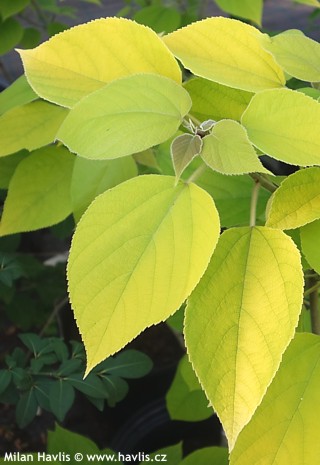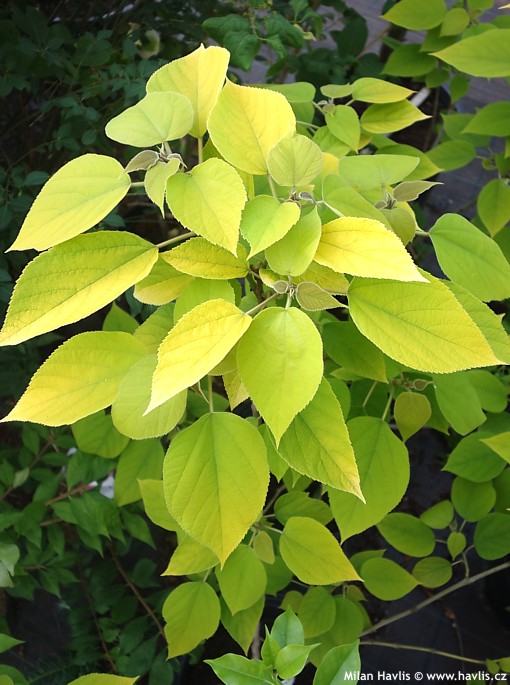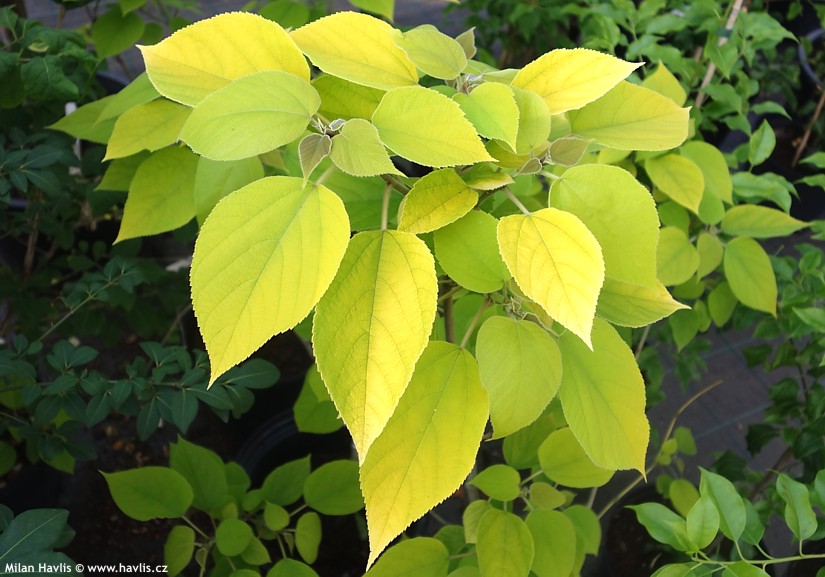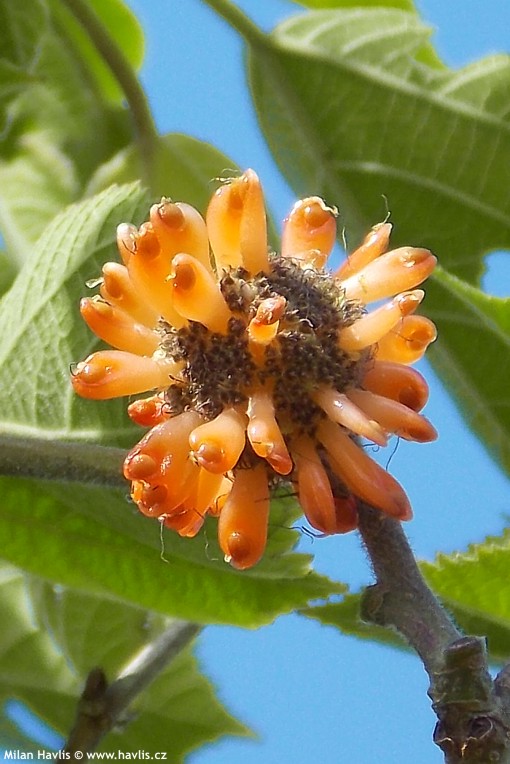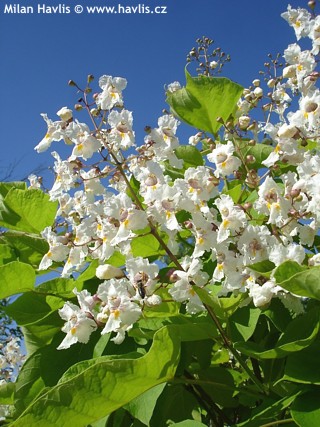Broussonetia papyrifera 'GOLDEN SHADOW' paper mulberry
Broussonetia
Paper mulberry is a unique tree from China, Korea and Japan. In 18th century it was brought to Europe by a French botanist Pierre Auguste Marie Broussonet whose surname gave the genus its Latin name. It a dioecious tree (you need both male and female plant to produce fruit) or a large shrub producing attractive leaves and edible fruit. The species can be rather substantial in its native environment, however, in cultivation it seldom exceeds 4-5 m tall in our zone 6 which is a borderline for this plant.
Golden Shadow is a selection variety of paper mulberry with golden yellow leaves in spring that turn soft green with golden hues in summer. They are deciduous and significantly vary in shape, not just on one plant – even on one branch. Young leaves are small and heart-shaped, older leaves gain size and lobing and mature into a widely lobed leaves similar to those on fig trees or white mulberries.
Male flowers are 5-7 cm long catkins, female flowers are formed in small spheres which, once pollinated, produce orange tubular fruit. It is edible and sweet but there is really not much to feast on thanks to its small size.
Paper mulberry is adaptable to almost any well-drained soil. It thrives in humus-rich soil in full sun or a very light partial shade. Pruning, if needed, should take place in early winter to reduce the risk of bleeding sap. It is considered invasive in warmer climates where it escaped from cultivation (S.W. USA), in colder zones this danger is almost nonexistent. Hardy to about -24°C (USDA zone 6), older, well-established trees might survive a few more degrees lower.
Last update 08-07-2015

































